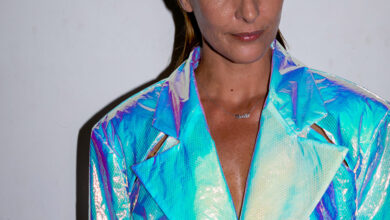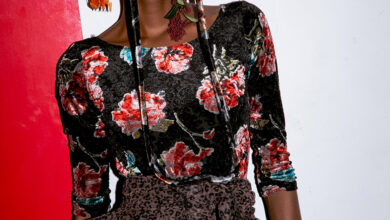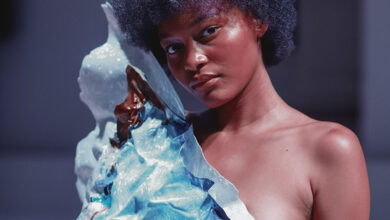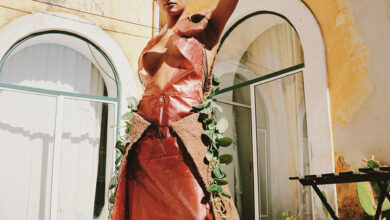FashionZoot reports
ITS#TEN SPECIAL 1: JURY INTERVIEWS
Zoot Magazine dedicates a special to the Trieste-based ITS# competition that celebrated this year its tenth anniversary.
Text by Anna Battista
Designed by architect Matteo Pertsch and built in the 1830s, Trieste’s oldest lighthouse, also known as the “Lanterna” is located in the old harbour of the town, not too far from the city’s aquarium. The latter, based in the building where the fish market was once held, includes a hall where different exhibitions and events take place, among them also the ITS# competition.
The competition has seen over 800 fashion institutions, schools and colleges from 70 different countries taking part in it throughout its editions, turning ten this year. The ITS#TEN finalists of the different categories, including Fashion and Accessories, Jewellery and Photography, were picked after a long selection process.
Since this edition was rather special, also the winners from the previous editions were invited to join in the celebrations that turned Trieste’s historical lighthouse from a beacon of light showing countless boaters the safe way home into a source of guidance and inspiration for the future of fashion.
ITS#TEN – The Jury
Antonio Berardi, Fashion Designer: It was nice to be asked back in this jury since it means that my opinion is valid and this makes me proud. The great thing about the ITS# competition is that you all hang around together, members of the jury, finalists, journalists and so on. This year’s finalists are much more savvy from the last time and some of the accessory designers were really impeccable. The best thing is that a lot of the work feels international rather than provincial. Usually in competitions if there is somebody from England, you know they will be a bit crazy; somebody from Italy may instead be more conservative, but things have been surprising here. I also found interesting that this time it is more about the individual rather than the school or the country and that’s important because a collection should be about the designer. We’re not in the age of huge concepts anymore when it comes to fashion, but we want to see beautiful things and meet a person that is charming and honest. One of my favourite designers was a guy from Italy, Kristian Guerra, his work is supercool and superinternational and there were things in his collection that I wanted to buy. The requirements of a winner? Creativity, a touch of reality, internationality, a certain sense of wearability and passion, because you see the clothes and you can see if there is genuine passion in them.
Bruno Collin, Diesel Art Director: We saw hundreds of folders this year. A larger jury comprising 20 members, including lecturers, people involved in fashion houses and brands such as Diesel, met two months ago and together we reduced the number of folders. We usually find ten finalists, but this year we were left with 11 folders and decided to go for 11 finalists. The final stages of the competition are usually extremely interesting since you meet the students and you spot the ones who will be able to work in a big company or fashion house. Last year for example we discovered Michael Kampe who won the Diesel Award. At the end of his internship we offered him the possibility of staying with the company since we realised he is an asset. All the finalists put a lot of energy into their collections this year and they reached a new level. They added a lot of details for example also inside the garments and I felt this was very important since it shows a designer’s identity. A while back I was talking with Jeremy Scott and what he told me then can help us understanding better the concept behind this competition: in the past young designers were showing extravagance, but now you must also show something that pays the bills at the end of the month. So you must be creative, but also functional, practical and wearable and the finalists at ITS# always display these qualities, that’s why I love this competition.
Deanna Ferretti, Founder of historical knitwear company Deanna and of the Modateca international research centre for knitwear: Arriving here as a finalist is great for the students since this is a very important competition on an international level. Yet all the finalists must also realise that this is just a step forward in their careers in the fashion industry. In fact this industry never stops and you never get to your next goal, you only arrive to the next step through strong will and great curiosity. Research is another important point for people working in the fashion industry since it can help us going forward and creating extremely innovative things. Modateca has an archive that mainly includes pieces Deanna created in collaboration with famous fashion houses and the archive can be visited by style centres and students since, rather than being a museum, it is an educational centre open to people interested in knitwear research. I do have a great respect for creative people like these young designers. I worked with people as different as Valentino and Martin Margiela in my life, people who allowed me to experience some strong emotions in my job and I think collaborations with young designers can lead us to a new kind of emotional fashion, everything depends on how much we are ready to invest onto them.
Kei Kagami, Fashion Designer: I’ve been a jury member for the last five years and I feel honoured and privileged at supporting new talents. I think there is a cultural and educational value in this competition and that’s definitely an important point. I would have liked to see more amazing things in the fashion collections like last year when Japanese designer Takashi Nishiyama presented his designs characterised by a very strong vision. I think many young designers at times forget that technique and skills are very important points in this job and they should strengthen them and also strip their collections of excessive yet superficial layers of information that they may have gathered from the Internet. I was absolutely satisfied with the standards of the accessory category: I’m in the position of deciding the YKK Award and that’s a huge responsibility because it means assigning a consisten money award to one person. Yet it makes me happy seeing the winners using the award to start their labels, like it happened with the winners of ITS#8, Yuima Nakazato who used to the award to start his own label and he’s now doing well in Japan, or with last year’s winner, Emma Yeo, whose work is now in Selfridges. There were three or four designers who came up with interesting projects, all different one from the other and all equally good. I chose the winner by considering three main points: the overall quality of the collection, the innovative, efficient and original way they used to integrate YKK zips into their products and, last but not least, I tried to forecast which designer may use the award to develop his or her designs in the best possible way. Laura Amstein came up with a very minimalist bag integrating a zippered secret handle on one side and two main zips connected on both sides. The design is linear and there’s no waste in it, so it’s a great example of the “Less Is More” concept.
Mandi Lennard, Mandi’s Basement Director: The first or second time I was in the jury I pretty much knew what I wanted, but now I know how important it is to meet the designers and see their clothes and their ideas coming to life. I applaud the designers because their upped their game this time and they really grabbed the opportunity that was given to them, refining their ideas and presenting them to us. It’s flattering and wonderful to be a member of this panel since I’ve got a wonderful relationship with fellow jury members and I regard them as friends. When we are in that room we have honest discussions about the designers and it’s always a healthy thing to have colourful debates, especially when there is a designer I love and somebody else thinks they are a one trick pony. Yet there are a lot of very successful designers who were described as one trick ponies when they started out. I actually think that, when young designers are described like that, it means they already have a vision, a signature and a personality. I enjoyed sitting through the various presentations and all the finalists came across eloquently. At times I looked at these kids explaining the story or concept behind their collections and thought, “God you’re profound!”














